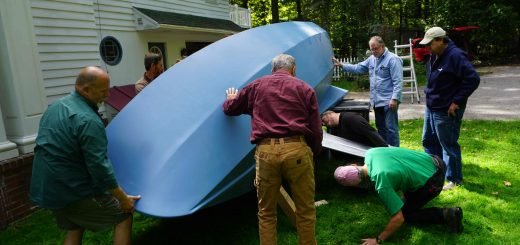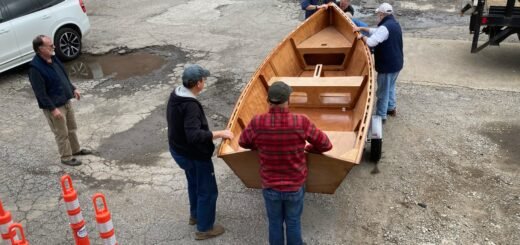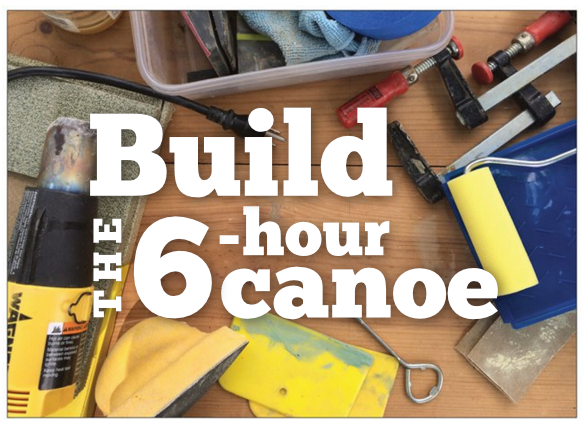Sharpening Tools the Max Peterson Way
 Our February guest speaker, Max Peterson, is a professional woodworker and amateur boatbuilder from the Pittsburgh area. He’s tried many ways to sharpen his tools to a razor’s edge. He searched for a quick and simple technique that could produce big results. He’s tried oilstones, waterstones, exotic imported stones, diamond hones, slow rpm waterbath grinders, and many other methods.
Our February guest speaker, Max Peterson, is a professional woodworker and amateur boatbuilder from the Pittsburgh area. He’s tried many ways to sharpen his tools to a razor’s edge. He searched for a quick and simple technique that could produce big results. He’s tried oilstones, waterstones, exotic imported stones, diamond hones, slow rpm waterbath grinders, and many other methods.
After many attempts he finally found a method that met all his criteria. It was also very inexpensive.
Max’s technique uses fine grit wet-or-dry paper as the abrasive. The paper is glued with spray mount to a piece of ¼” glass to provide a dead-flat surface. The glass is mounted to a backing board of ¾” MDO or plywood and held in place with double sided tape. He uses three such panels made up in 600, 1200, and 2,000 grit.
 The wet-or-dry paper can be purchased at auto body supply stores, on-line, or through tool supply catalogues.
The wet-or-dry paper can be purchased at auto body supply stores, on-line, or through tool supply catalogues.
Essentially, sharpening or honing is a polishing process. If we magnified the tool edge, we would see the steel as raggedy and corduroy-like. Honing, gets rid of those uneven ridges and edges and thereby makes the tool very sharp. When properly sharpened the tool edge will have a mirror like surface.
To sharpen a tool, for example a plane blade, start by honing the back-side of the blade. Using a spray bottle, wet the paper. Lay about ¾” of the back-side of the blade edge perpendicular to the edge of the 600 grit paper. Using even pressure, stroke the blade 50 times up and down the length of the paper. Inspect. Repeat this step until all the visible scratch marks in the stroked area run parallel to the blade edge.
Move to the 1200 grit block and stroke the blade 50 times in the same manner. This step should start to remove the scratch marks. Move to the 2000 grit block and do the same. Inspect and repeat as necessary. A highly polished, near mirror-like surface should result.

To hone the bevel edge of the blade, mount it in a honing guide. The guide is an $8 hardware item available on-line or through woodworking catalogues. Carefully position the blade so the bevel is in full contact with the abrasive. Use a screwdriver to securely tighten the guide to lock the blade in position. Hone the bevel edge starting with 50 strokes on the 600 grit paper pushing the bevel edge down the length of the paper. Continue on with 50 strokes each on the 1200 and 2000 grit papers. Inspect and repeat as necessary.
You should have an incredibly sharp blade. You can use the same method to sharpen chisels.
Max offered a number of tips for tuning a bench plane. Adjust the chip breaker so it comes to within 1/32” of the blade edge. The chip breaker starts the curling action of the cut wood to keep the plane throat clear.
If the plane’s throat is adjustable, keep it as close to the blade as possible. The edge of the throat supports the wood as the blade engages it. The more the wood is supported, the cleaner the cut.
When the tool is sharp and tuned, it is a joy to use.
There are many ways to sharpen tools, some complex, some time consuming. Max’s method does it inexpensively and quickly. It is worth investigating even if you have a system that seems to work for you.







